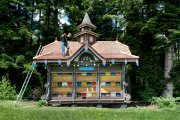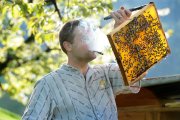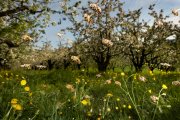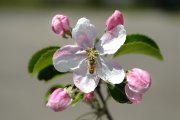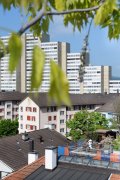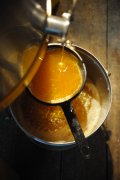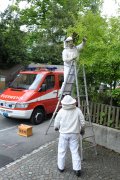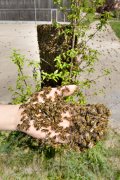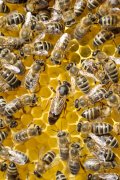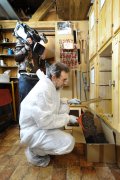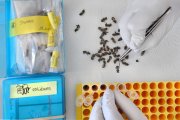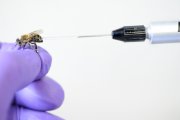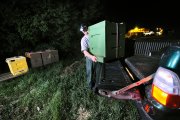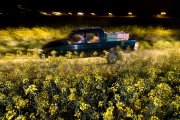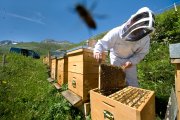Beekeepers - Pollination on order

Switzerland, Mühleberg
29.04.2010
Relict from the last century. A typical Swiss beehive defies the traffic on the A1 motorway.
More about this projectBack to overview
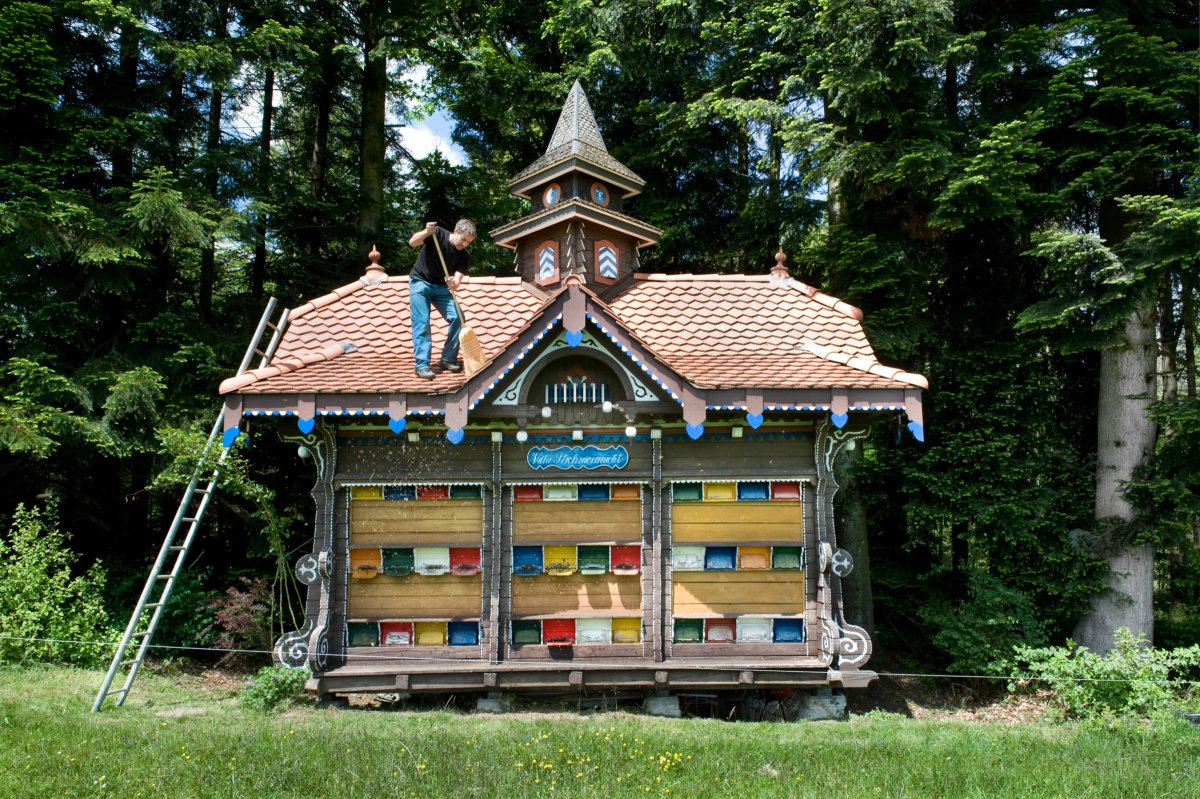
Switzerland, Rain LU
22.05.2010
Twice a year the gardener and hobby beekeeper Markus Gabriel wipes the fir needles off the roof of the "Villa stich mein nicht". The beehive, built in 1930, is a protected monument.
More about this projectBack to overview
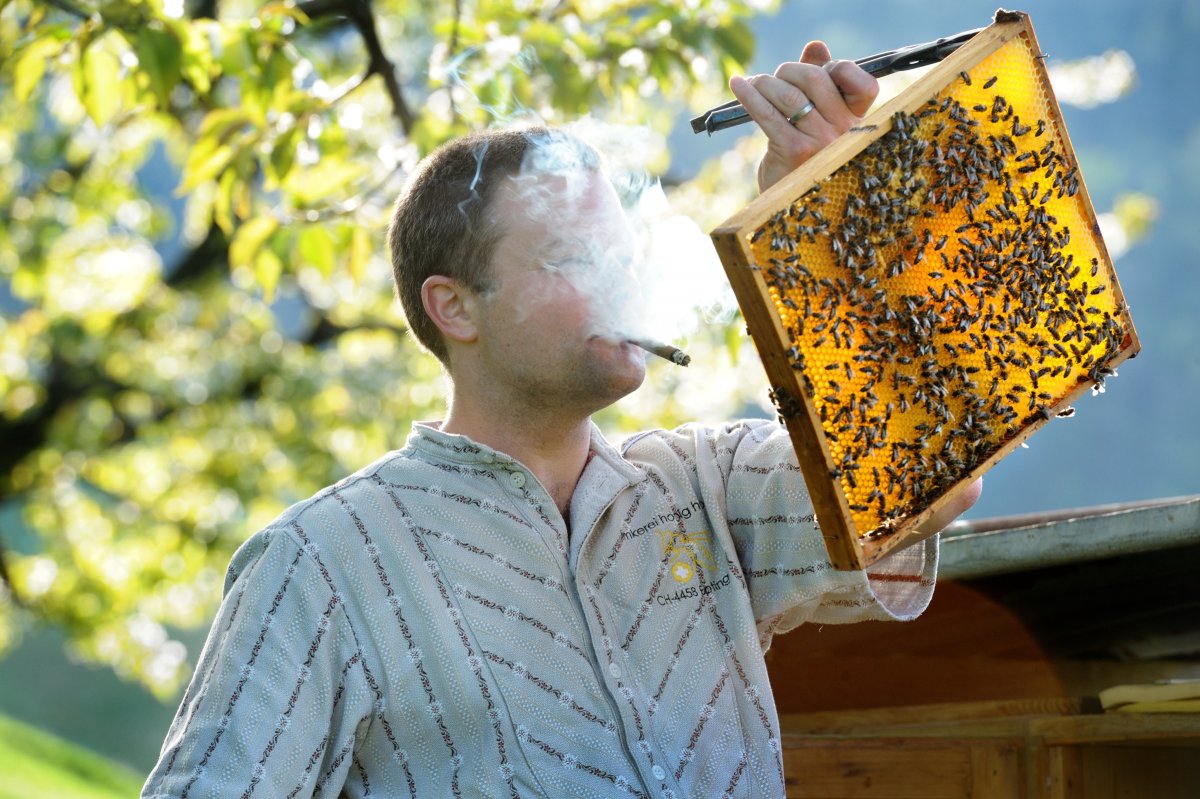
Switzerland, Eptingen
29.04.2010
The itinerant beekeeper Reto Habisreutinger controls the honeycombs of his hives on the edge of a low trunk cherry plantation, where they provide ideal pollination of the cherry blossoms. The smoke has a calming effect on the bees and protects the beekeeper from too many stings.
More about this projectBack to overview
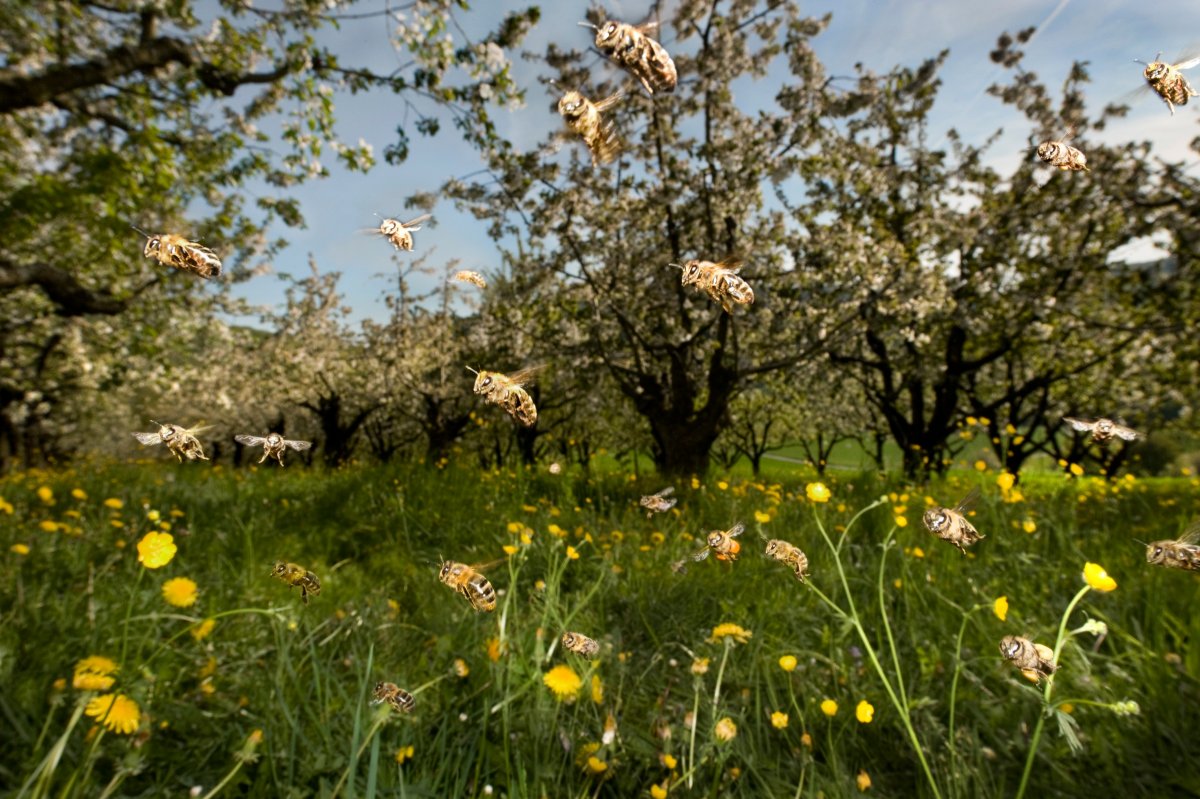
Switzerland, Wintersingen
29.04.2010
Bees approaching the beehive. They provide an even pollination in a cherry plantation.
More about this projectBack to overview
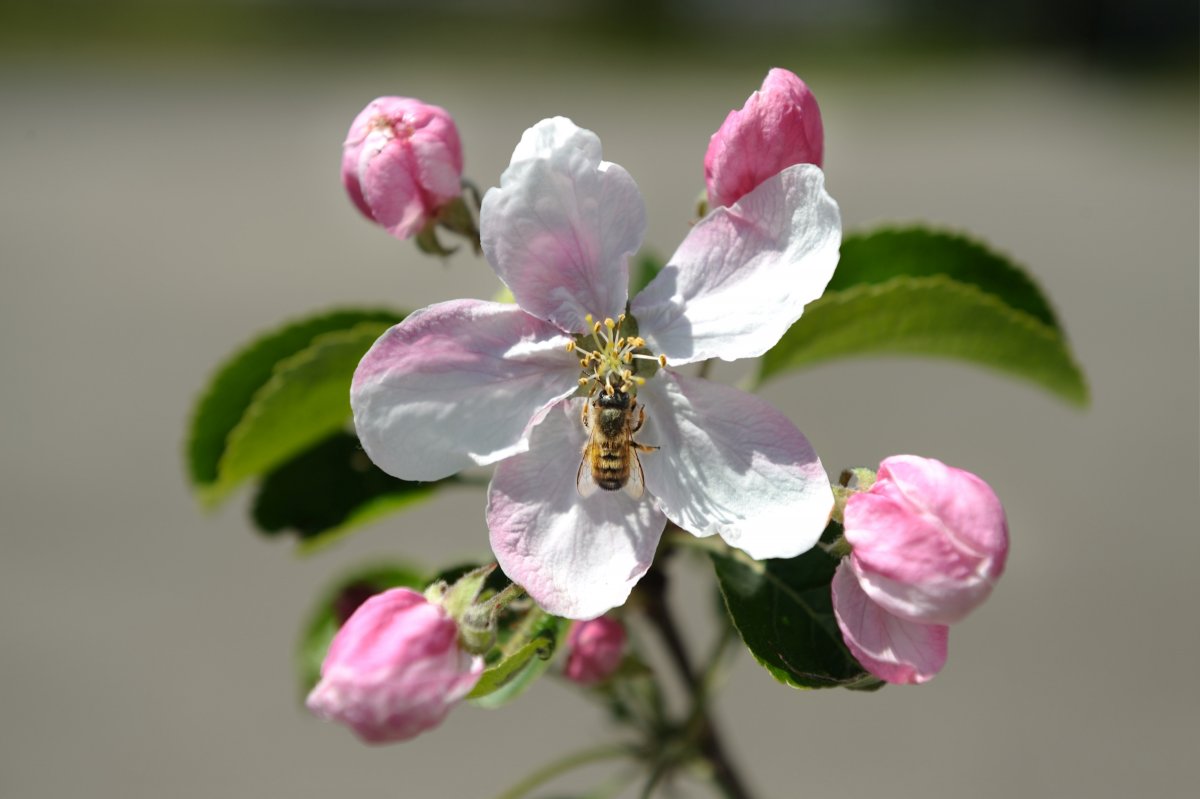
Switzerland, Bern
28.04.2010
A wild bee, Osmia cornuta (hornfaced bee) on an apple blossom.
More about this projectBack to overview
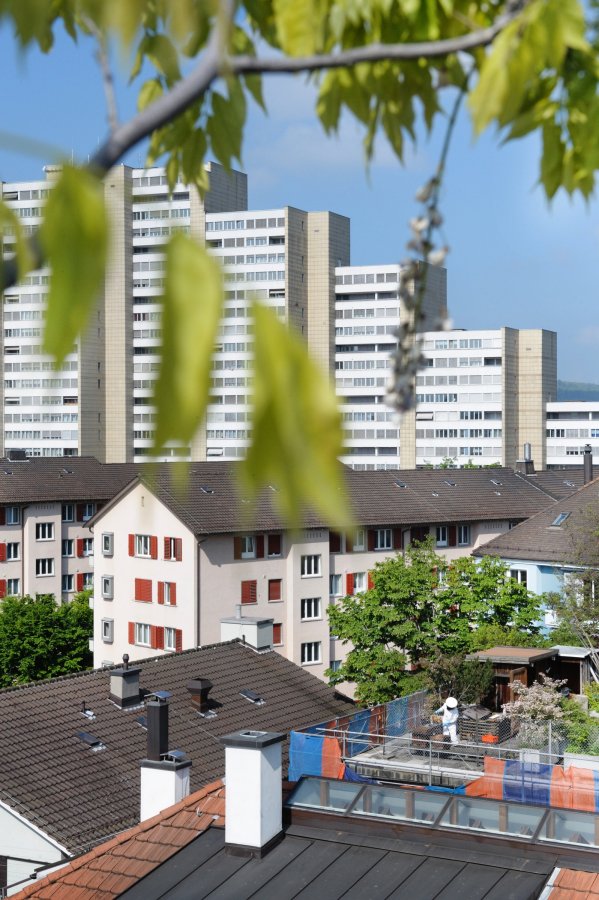
Switzerland, Zürich
22.05.2010
Beatrice Meyer, a hobby beekeeper, produces bee honey on a roof terrace in the middle of Zurich's Aussersihl district. Bees often find a more varied range of food in the city than in the countryside, where intensive farming predominates.
More about this projectBack to overview
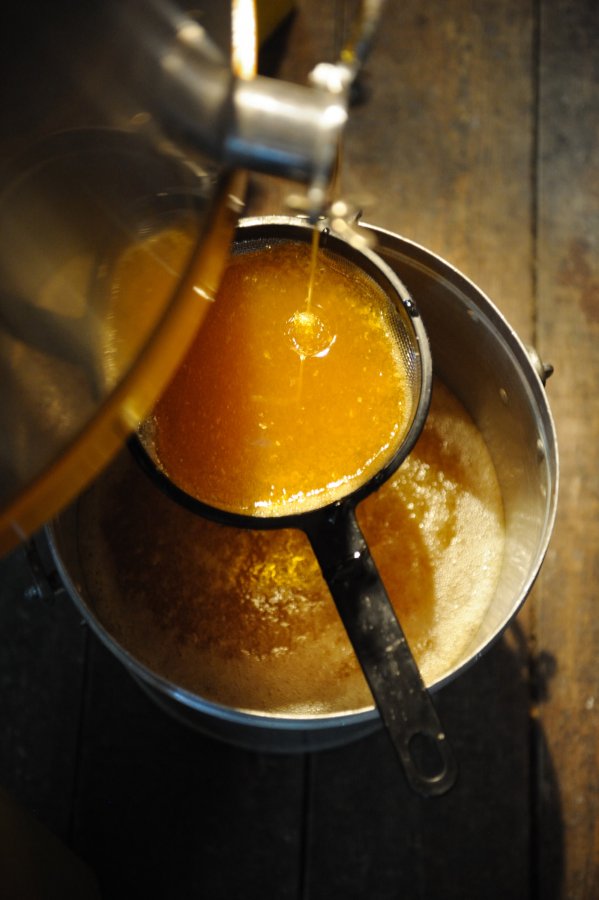
Switzerland, Rain LU
22.05.2010
Freshly spun forest honey from beekeeper Markus Gabriel. If you take away all honey from the bees, they will not survive the winter.
More about this projectBack to overview
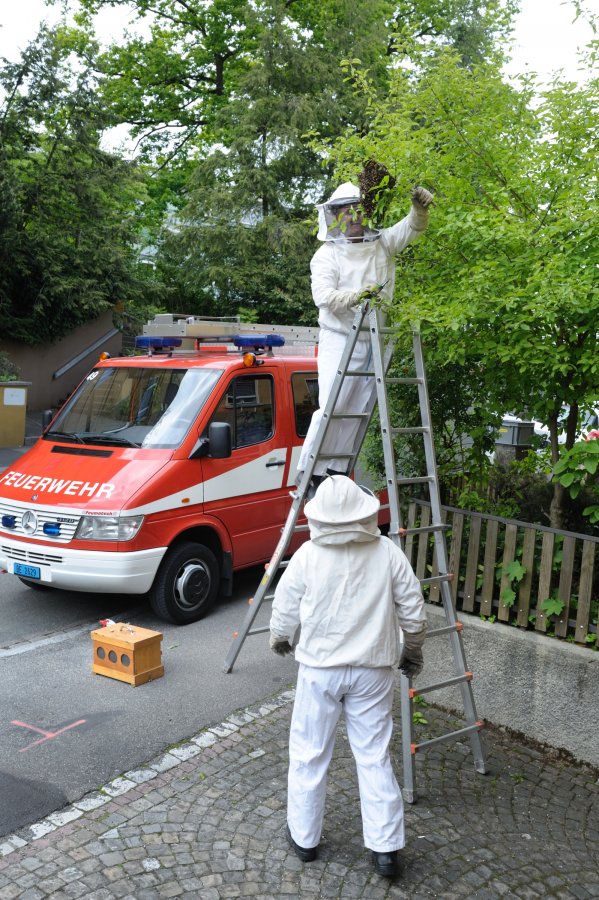
Switzerland, Bern
20.05.2010
Undesirable guests. The professional fire brigade Bern removes a swarm of bees from a private property. The bee colony is passed on to interested beekeepers.
More about this projectBack to overview
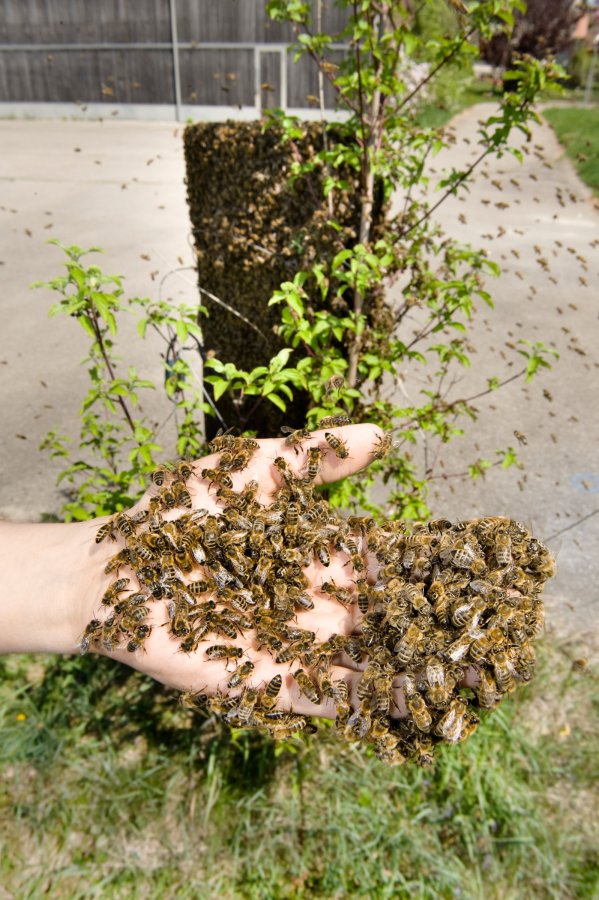
Switzerland, Bern
28.04.2010
A colony of bees has swarmed out. The bees fly wild until they gather around the queen and form a cluster.
More about this projectBack to overview
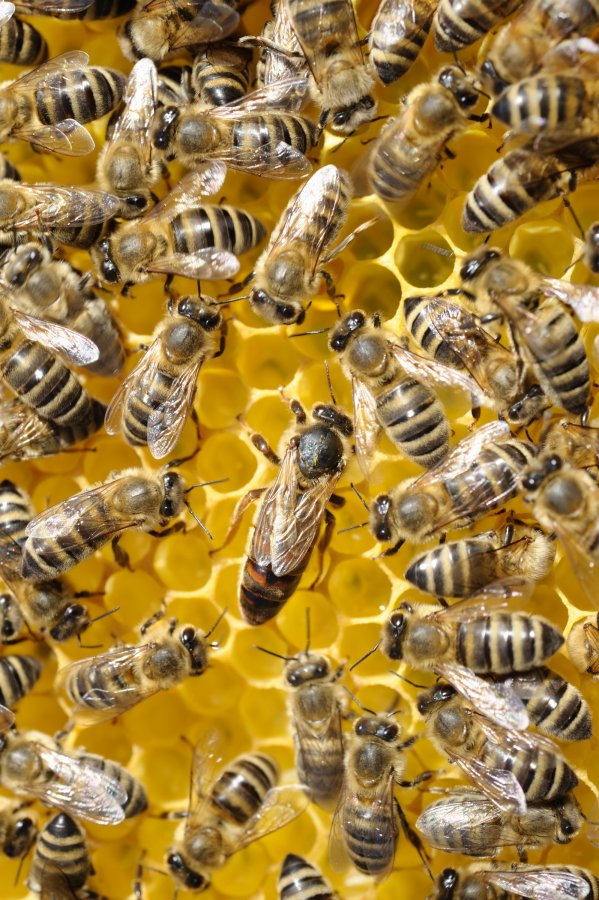
Switzerland, Wintersingen
29.04.2010
Queen bee surrounded by workers.
More about this projectBack to overview
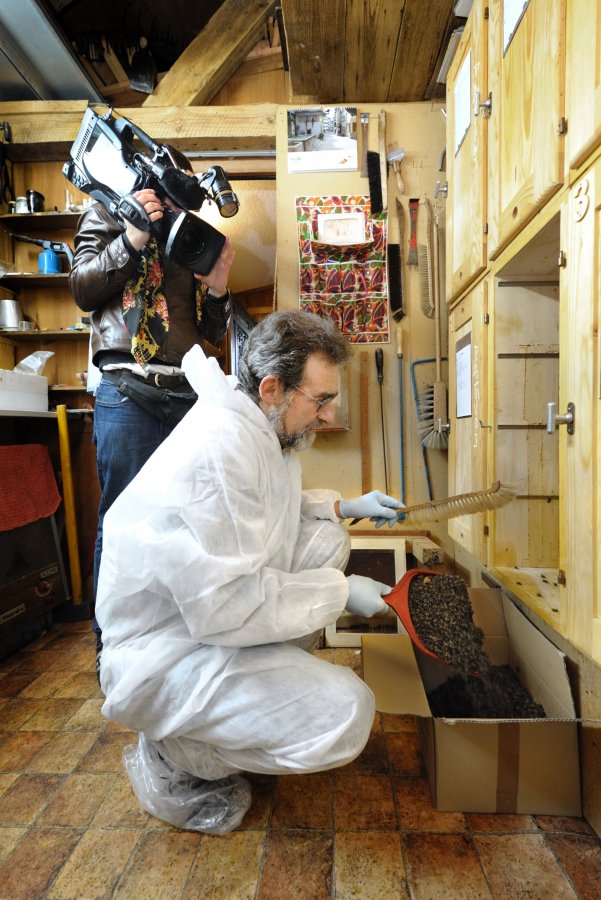
Switzerland, Boniswil
06.05.2010
The bee disease Sauerbrut has been diagnosed at beekeeper Peter Aeschbach. Bee inspector Walter Urech is carrying out the officially ordered total remediation. All bees are killed with liquid sulphur. A camera team from Swiss television is shooting a report for the show Schweiz Aktuell. Cameraman Raphael Gubler films bee inspector Walter Urech clearing the dead bees.
More about this projectBack to overview
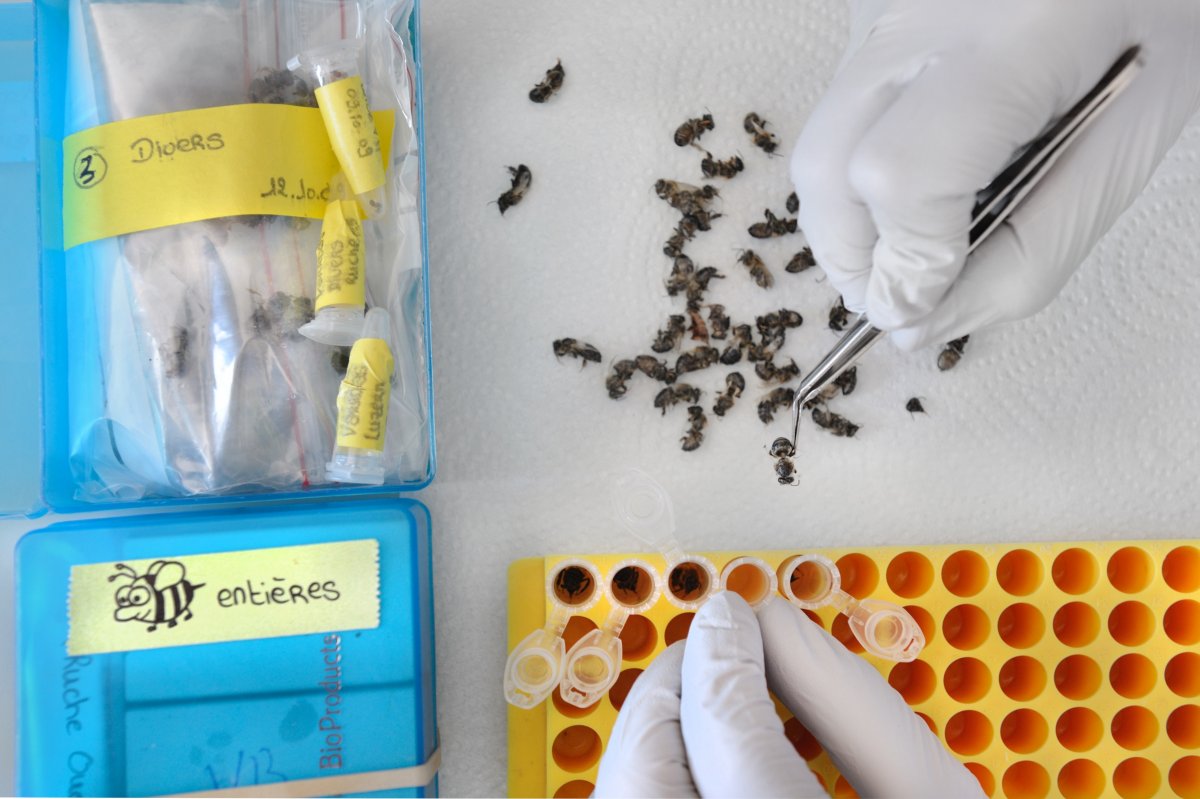
Switzerland, Liebefeld
28.04.2010
Centre for Bee Research, Agroscope Liebefeld-Posieux ALP. Biologist Benjamin Dainat sorts bees with a deformed wing for virus diagnosis.
More about this projectBack to overview
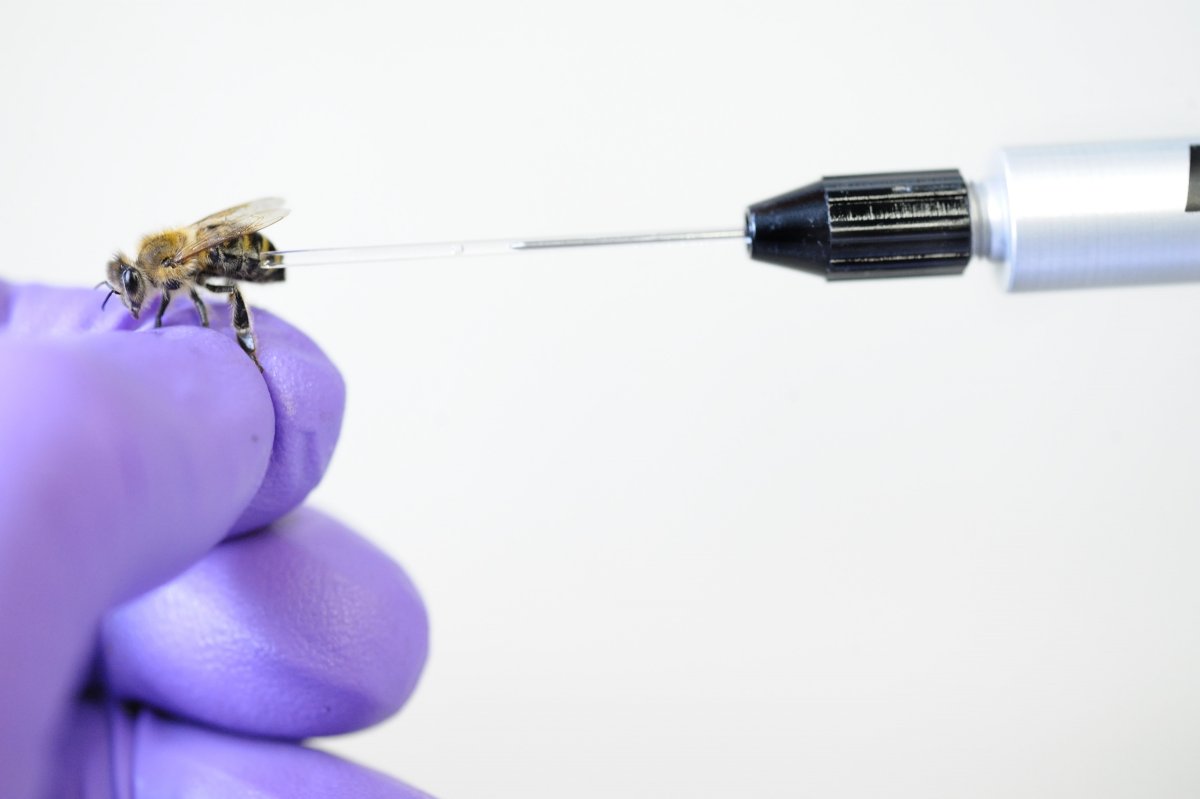
Switzerland, Liebefeld
12.05.2010
Centre for Bee Research, Agroscope Liebefeld-Posieux ALP : A virus solution is injected between the back armour of a bee. Besides the Varroa mite, viruses are the main cause of bee mortality.
More about this projectBack to overview

Switzerland, Bern
12.05.2010
The bee researchers Marc Greco (left) and Benjamin Dajnat, from the Swiss Bee Research Center, Agroscope Liebefeld-Posieux ALP, scan a colony of bees in a computer tomograph at the animal clinic in Bern. They hope to gain an illuminating insight into the dark, moist hive.
More about this projectBack to overview
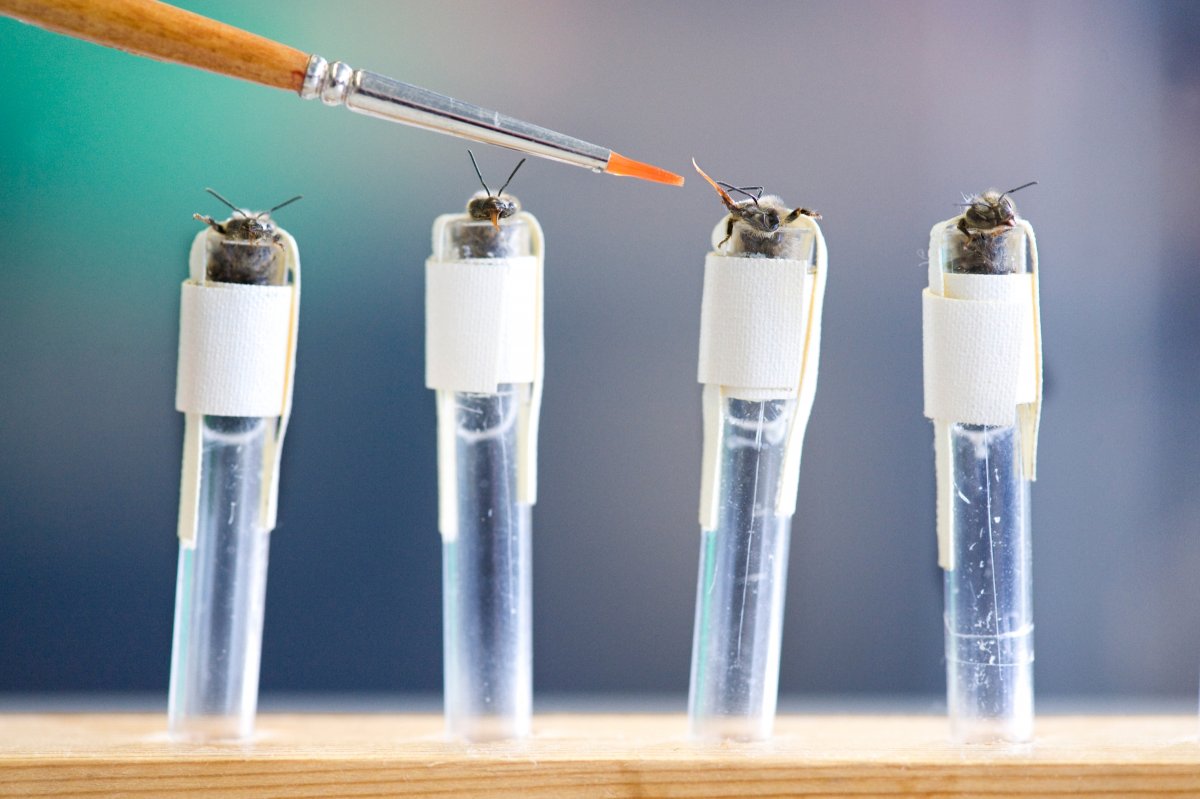
Switzerland, Liebefeld
12.05.2010
Biologist Marc Schaefer, from the Centre for Bee Research, Agroscope Liebefeld-Posieux ALP, feeds fixed single bees with a sugar solution.
More about this projectBack to overview
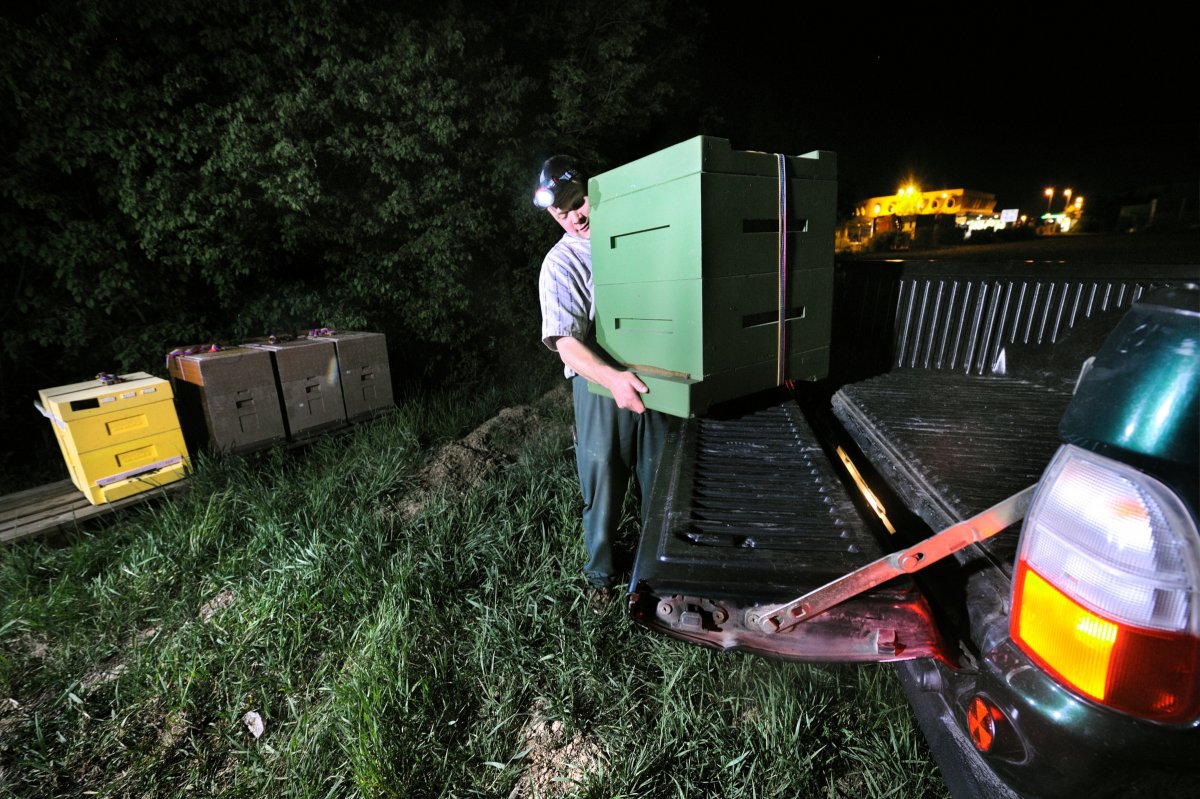
Switzerland, Bubendorf
29.04.2010
The itinerant beekeeper Reto Habisreutinger moves his colonies to a rape field at night. There they provide for a better pollination and higher yield. After flowering it will move the bees to another place.
More about this projectBack to overview
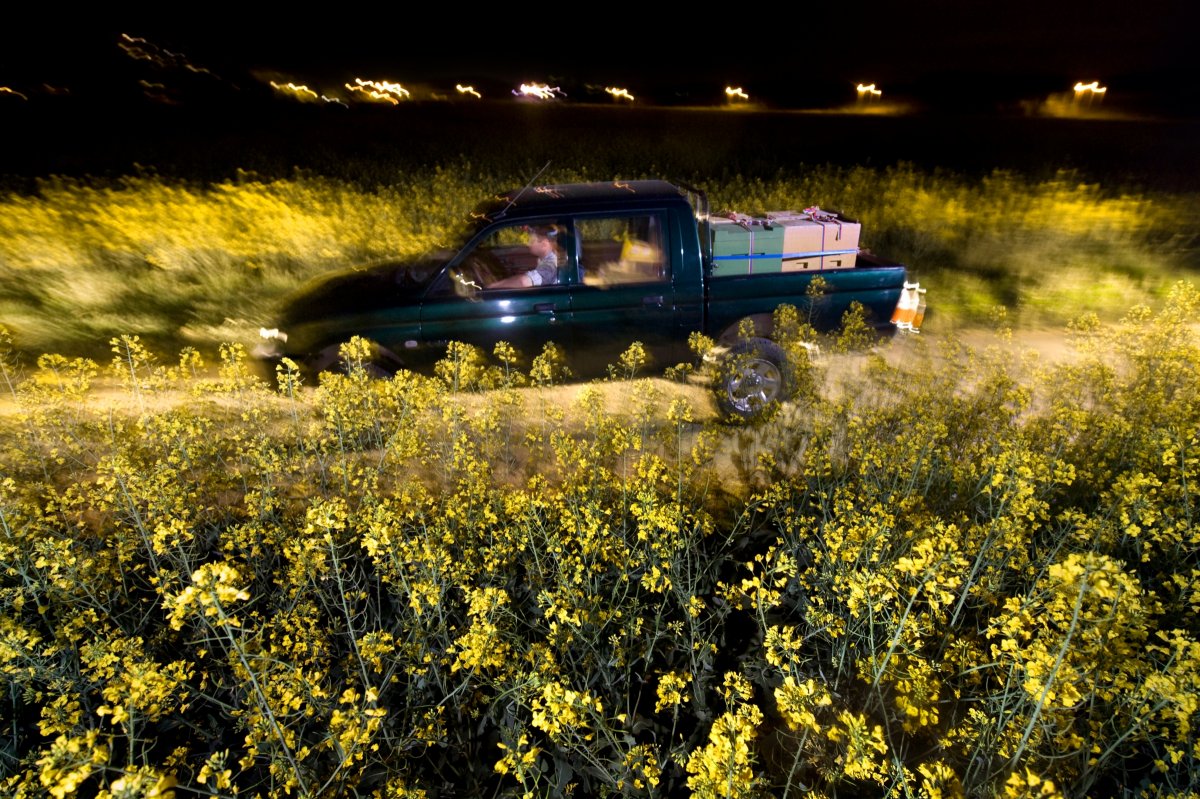
Switzerland, Bubendorf
29.04.2010
The itinerant beekeeper Reto Habisreutinger moves his colonies to a rape field at night. There they provide for a better pollination and higher yield. After flowering it will move the bees to another place.
More about this projectBack to overview

Switzerland, Furkapass
26.07.2009
Thomas Amsler, a beekeeper from the lowlands, has set himself up next to a bend on the Furka pass road. The species-rich alpine flora is a gourmet paradise for its bees. They reward it with 250 kilograms of alpine rose honey.
More about this projectBack to overview
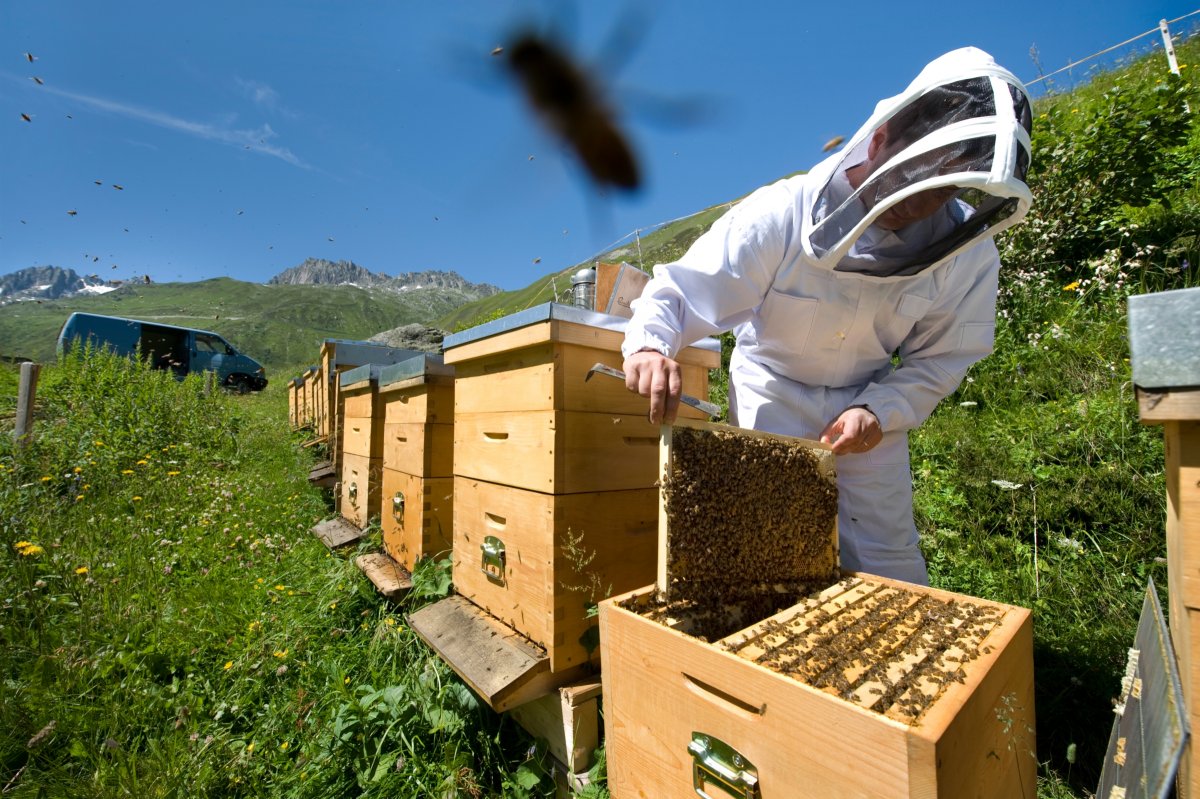
Switzerland, Furkapass
26.07.2009
Thomas Amsler, beekeeper from Schupfart. After the fruit trees and the rape have faded in the lowlands, the travelling beekeeper brings his bee colonies to the mountains. On the Urner side of the Furka he produces the coveted alpine rose honey.
More about this projectBack to overview
Beekeepers - Pollination on order
Bee colonies are dying, beekeeping is disappearing due to a lack of offspring. Do we soon face famine because fruit, grain and vegetables are no longer pollinated?
The situation is not so apocalyptic, but it is bad enough that the itinerant beekeeper is slowly gaining in profile and profit.

